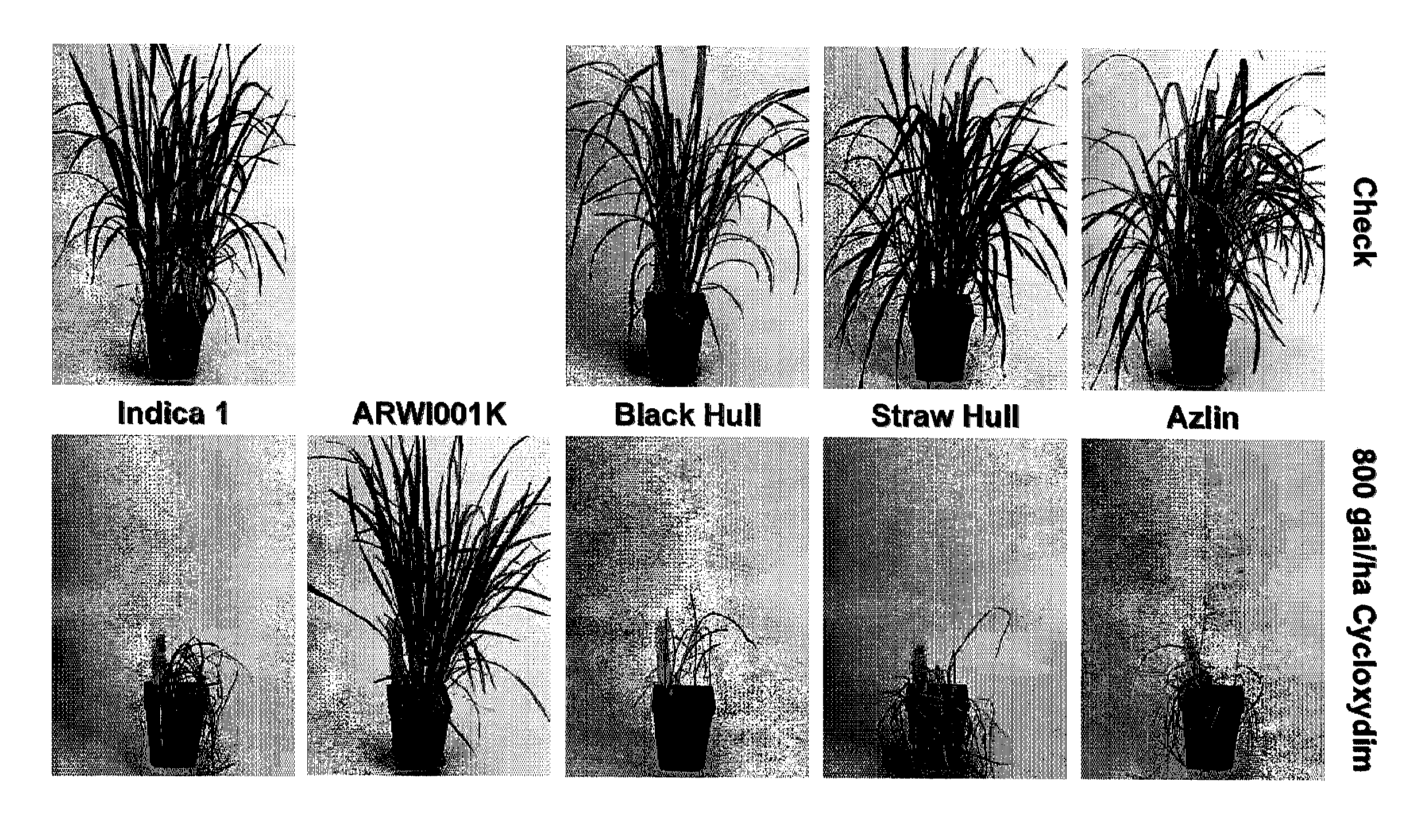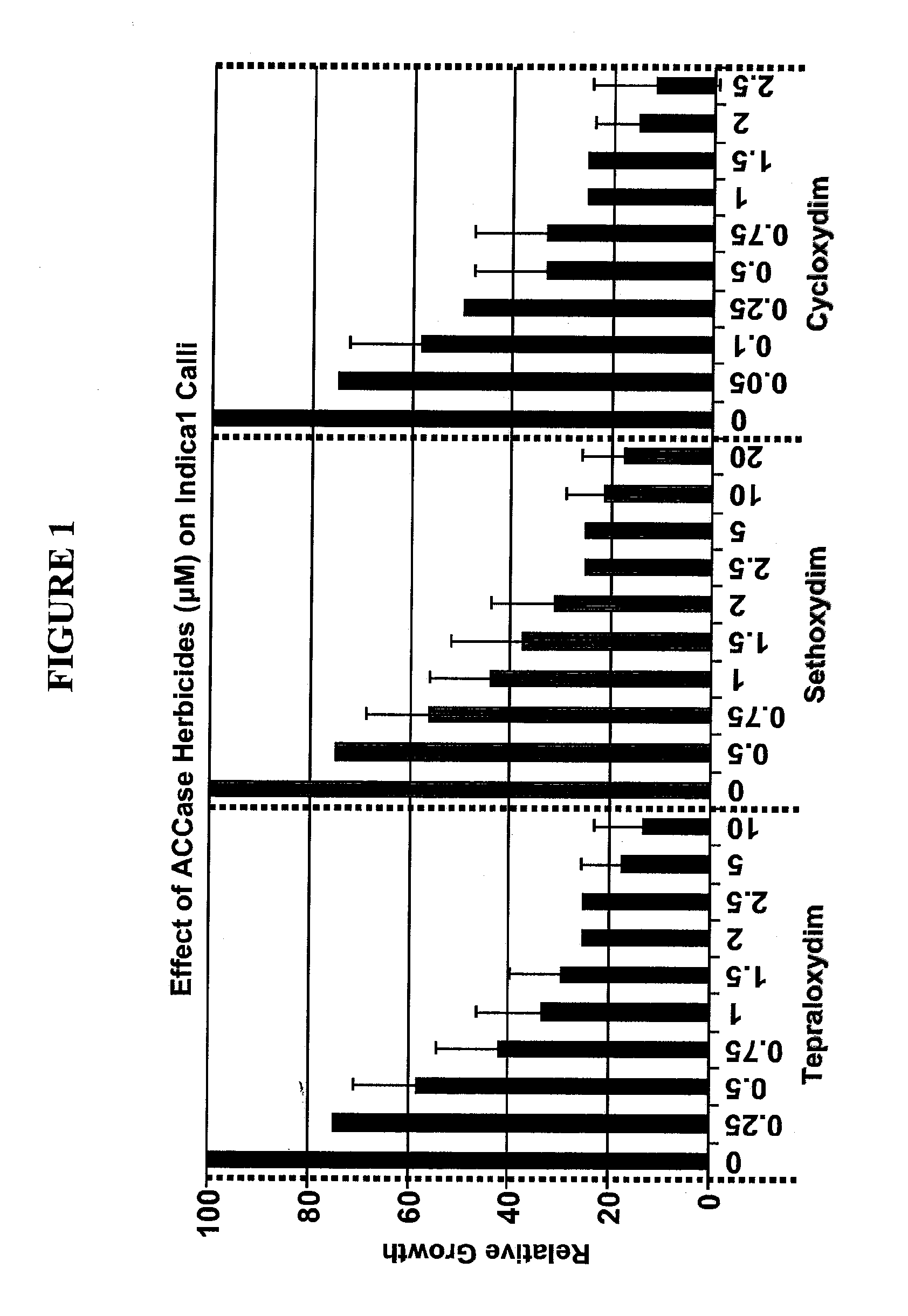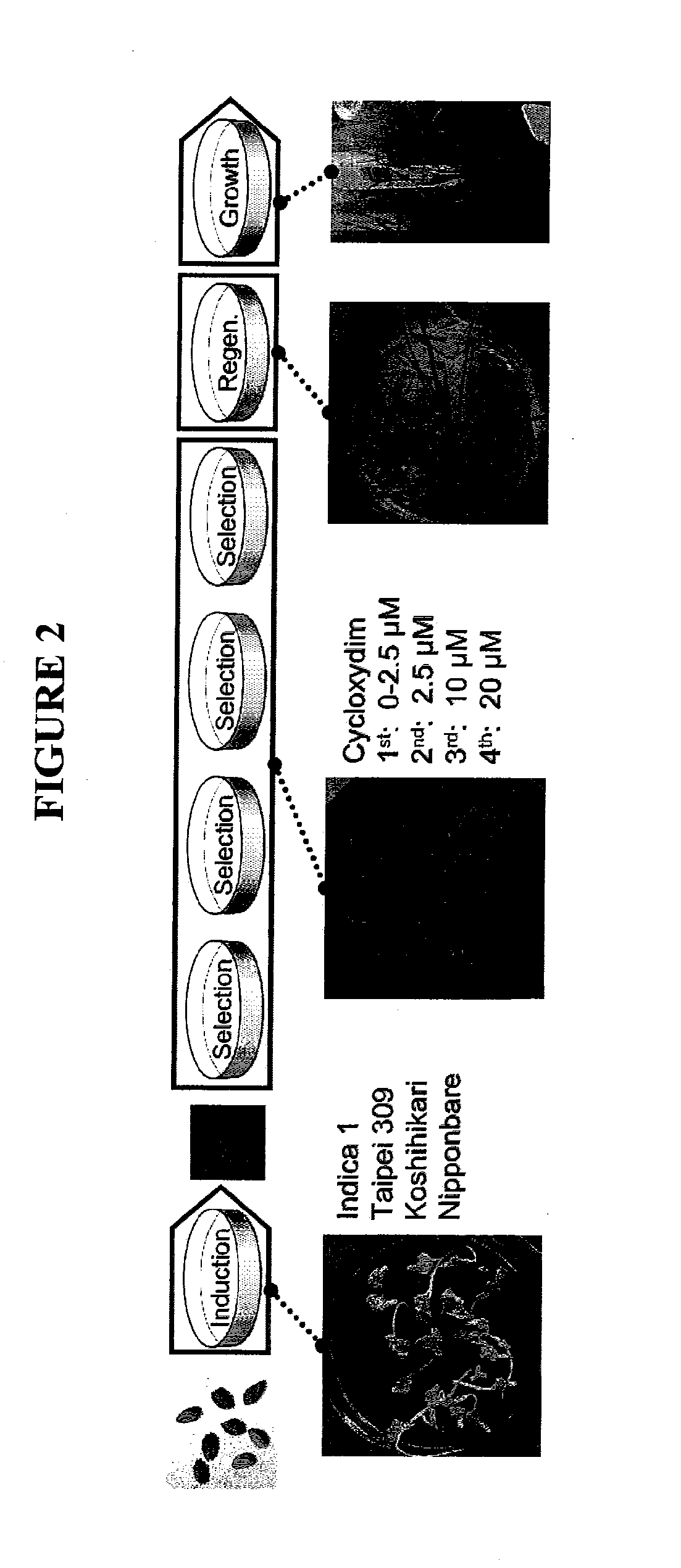Herbicide-tolerant plants
- Summary
- Abstract
- Description
- Claims
- Application Information
AI Technical Summary
Benefits of technology
Problems solved by technology
Method used
Image
Examples
example 1
[0281]Tissue Culture Conditions
[0282]An in vitro tissue culture mutagenesis assay has been developed to isolate and characterize plant tissue (e.g., rice tissue) that is tolerant to acetyl-Coenzyme A carboxylase inhibiting herbicides, e.g., tepraloxydim, cycloxydim, and sethoxydim. The assay utilizes the somaclonal variation that is found in in vitro tissue culture. Spontaneous mutations derived from somaclonal variation can be enhanced by chemical mutagenesis and subsequent selection in a stepwise manner, on increasing concentrations of herbicide.
[0283]The present invention provides tissue culture conditions for encouraging growth of friable, embryogenic rice callus that is regenerable. Calli were initiated from 4 different rice cultivars encompassing both Japonica (Taipei 309, Nipponbare, Koshihikari) and Indica (Indica 1) varieties. Dehusked seed were surface sterilized in 70% ethanol for approximately 1 min followed by 20% commercial Clorox bleach for 20 minutes. Seeds were rins...
example 2
[0285]Selection of Herbicide-Tolerant Calli
[0286]Once tissue culture conditions were determined, further establishment of selection conditions were established through the analysis of tissue survival in kill curves with cycloxydim, tepraloxydim, sethoxydim (FIG. 1) or haloxyfop (not shown). Careful consideration of accumulation of the herbicide in the tissue, as well as its persistence and stability in the cells and the culture media was performed. Through these experiments, a sub-lethal dose has been established for the initial selection of mutated material.
[0287]After the establishment of the starting dose of sethoxydim, cycloxydim, tepraloxydim, and haloxyfop in selection media, the tissues were selected in a step-wise fashion by increasing the concentration of the ACCase inhibitor with each transfer until cells are recovered that grew vigorously in the presence of toxic doses (see FIG. 2). The resulting calli were further subcultured every 3-4 weeks to R001M with selective agent...
example 3
[0289]Regeneration of Plants
[0290]Tolerant tissue was regenerated and characterized molecularly for ACCase gene sequence mutations and / or biochemically for altered ACCase activity in the presence of the selective agent.
[0291]Following herbicide selection, calli were regenerated using a media regime of R025M for 10-14 days, R026M for ca. 2 weeks, R327M until well formed shoots were developed, and R008S until shoots were well rooted for transfer to the greenhouse (Table 2). Regeneration was carried out in the light. No selection agent was included during regeneration.
[0292]Once strong roots were established, M0 regenerants were transplant to the greenhouse in 4″ square pots in a mixture of sand, NC Sandhills loamy soil, and Redi-earth (2:4:6) supplemented with gypsum. Transplants were maintained under a clear plastic cup until they were adapted to greenhouse conditions (ca. 1 week). The greenhouse was set to a day / night cycle of 27° C. / 21° C. (80° F. / 70° F.) with 600W high pressure so...
PUM
| Property | Measurement | Unit |
|---|---|---|
| Fraction | aaaaa | aaaaa |
| Time | aaaaa | aaaaa |
| Time | aaaaa | aaaaa |
Abstract
Description
Claims
Application Information
 Login to View More
Login to View More - R&D
- Intellectual Property
- Life Sciences
- Materials
- Tech Scout
- Unparalleled Data Quality
- Higher Quality Content
- 60% Fewer Hallucinations
Browse by: Latest US Patents, China's latest patents, Technical Efficacy Thesaurus, Application Domain, Technology Topic, Popular Technical Reports.
© 2025 PatSnap. All rights reserved.Legal|Privacy policy|Modern Slavery Act Transparency Statement|Sitemap|About US| Contact US: help@patsnap.com



